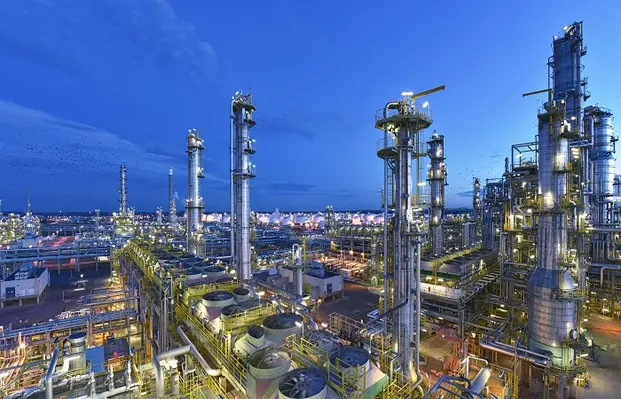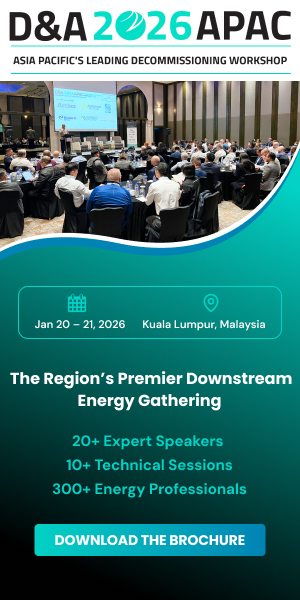Igor Nasirov, vice president, Euro Petroleum Consultants DMCC assesses trends impacting the development of the refining and petrochemicals sector
The rapidly evolving landscape of the world's energy sector presents us with a compelling narrative. Just five years ago, our discourse revolved around petrochemicals as the future of extending the petroleum era. Today, the visionary notion of "Crude oil to Chem" has transitioned from abstract concept to operational reality. As we tread into the future, the horizon promises a paradigm shift towards "Carbon to Chem," with the nascent "Electricity to Chem" emerging as an additional frontier.
Nonetheless, this industry stands at the crossroads of several challenges. The call for decarbonisation resounds alongside the shadows cast by global economic turmoil, the anticipation of paradigm-altering technological innovations, and the imperative to regulate the movement of people and goods. A dynamic shift in focus and competition for crude oil resources is also on the horizon. Crude oil-based naphtha, as the primary feedstock for petrochemicals, could face competition from additional feedstock resources like naphtha from natural gas condensate and NGL.
Green energy – an incomplete solution
Despite the Paris Agreement, the world's growing demand for energy resources due to technological constraints cannot be satisfied by "green" energy alone. Recent data from Arbeitsgemeinschaft Energiebilanzen (AGEB) for 2022 reveals that more than 44% of Germany's electricity was generated from renewable sources, totaling approximately 254 billion kWh. As a result, the ambitious targets of achieving 65% and, even more ambitiously, 80% of electricity generation from renewables by 2030 will be challenging to attain. It is crucial to remember that more than one billion people worldwide lack access to electricity, and two billion continue to rely on wood as their primary energy source. Simultaneously, the top-selling car is now the EV Tesla Model Y.
Peak demand – a catalyst for transformation
In today's changing world, the need to improve energy efficiency is becoming increasingly important. Improving the efficiency of energy consumption has long been called the "fifth fuel".
During peak consumption periods, peak energy demand will keep energy prices high, placing new demands on thermal insulation materials. For instance, it will expand the market for polyurethane foam. The price of oil is maintaining a range of US$70 to US$90 per barrel, aligning with the most optimistic forecasts by analysts.
An industry in flux
Prior to the beginning of 2020, the oil and gas market was nearly equal in size to the market for petroleum products, with the petrochemicals market surpassing them both. At this moment, it's too early to speak of significant changes. What we can observe, however, is that in 2019, some industry’s giants like BASF's sales amounted to 59.316 billion euros, with forecasts exceeding 73 billion euros by 2023.
Promising avenues for growth
The chemical industry unveils promising growth prospects. An asymmetric alternative involves increasing processing volume, cost-efficient transportation optimisation, diversified export channels to unconventional regions, and gradually shifting the export basket towards higher processing depth, product variety, and a higher share of high-value products.
Yet, several questions arise. Will we make use of these opportunities? Are we fully aware of the current challenges? Can we overcome internal contradictions between upstream and downstream sectors, upstream and midstream, oil and gas processing, and petrochemicals? How can shareholders recognise and evaluate these opportunities in time? What forecasts are required to launch new projects with a payback period of fewer than 10 years and a discount rate exceeding 10%?
Beyond asset divestment
The Stone Age did not end because stones ran out. Selling hydrocarbon assets may appear to make a company 'greener' and even boost stock prices. However, this won't resolve the underlying contradictions or increase profits and dividends.
Contours of the future in oil processing
Key focuses in the future of oil processing will require adjustment. Technologies exist to accelerate the sector's development. Not all have embarked on this path, but the intensive formation and development of petrochemical clusters and hubs at refineries are already underway.
Refineries: varied classes
The creation of Crude oil to Chem complexes not only withstood the test of crisis but gained new momentum. This approach has proven successful, even without significant value-added processing. The company SASA, for example, announced such an approach at the Euro Petroleum Consultants' annual IDW2023 conference.
We can roughly categorise refineries into classes:
First Class: Integrated petrochemical clusters with diversified process portfolios, a broad product basket and decarbonisation options. Existing integrated petrochemical complexes are characterized by high production concentration, diversified product portfolios, and excellent logistics due to their coastal locations with access to resources and markets.
Business Class: Facilities that integrate oil processing and petrochemistry at refineries. Such complexes have the potential to become focal points and key assets for industry development.
Economy Class: These are refineries distinguished by their deep oil processing capabilities, usually involving a combination of FCC, hydrocracking, and delayed coking.
Low-Cost: Reserved for refineries that focus on the production of Euro-5 standard fuels, employing a hydroskimming approach.
Innovation and sustainable production
In addition, innovation and eco-friendly small to medium-tonnage production facilities are replacing mega-factories in some areas. A prime example is the cluster created by the South Korean company SK in Ulsan, based on a refinery with a capacity of around 40 million tons of oil per year (840 thousand barrels per day).
SOCAR, a company utilising unique resources and a skilled workforce in both Azerbaijan and Turkey, can potentially build a similar system. Azerbaijan has a unique geographic location and is also actively pursuing green energy production opportunities with an active involvement of the Masdar company.
When considering the project cost, it is advisable to take into account the long-term contribution to the economy of the region and the country as a whole from related industries. Based on the development of energy from renewable sources, including hydroelectric power plants - green energy, it is possible to build production chains for commodities with a reduced carbon footprint and with approximately zero environmental pollution.
The nexus of sustainability
Now, in prioritising the production of high-value-added products, integration into refinery production chains for green hydrogen, oleochemistry (with a focus on producing biodiesel and bioglycerin, especially Sustainable Aviation Fuel (SAF)), polyols, and propylene glycols, and integrating them into a single complex, offers a way to continuously produce monopropylene glycol (MPG), di-propylene glycol (DPG), and higher glycols in a fixed ratio.
Strategic foothold in petrochemicals
For ranking prospective products for production, polyethylene and polypropylene almost always take the lead, thanks to:
• High market attractiveness (a large market with stable demand growth)
• Favourable strategic aspects (readily available raw materials, seamless integration with refineries and petrochemical complexes, minimal logistical requirements)
• Good technology accessibility (multiple licensors offering competitive processes)
Nevertheless, for a strategic vision of refinery development, nothing less than integration with green energy, blue and green hydrogen, oleochemistry, and the production of biodegradable products such as surfactants and plastics can ensure the industry's sustainable progress.









